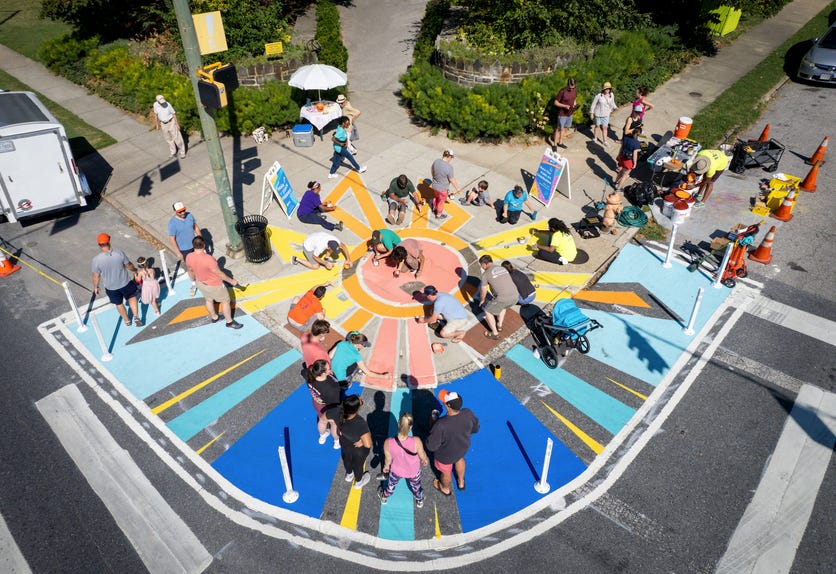I’m bumping the post that I had planned to give some folks a time-sensitive head’s up.
LA Area: Latino Urbanism at Ontario Museum Culture Fest
On May 11, from noon to 4:00, the Ontario [California] Museum of History and Art is hosting its Culture Fest Block Park. James Rojas and John Kamp of PlaceIt! urban planning and design firm will be there with a hands-on activity rooted in their model-building community engagement work and Rojas’ “Latino Urbanism” practice. Here’s their blurb:
Design and build your Dream Front-Yard Plaza
As Latinos transform their front yards into personalized plazas, it becomes a space of memory, assimilation, and aspiration into the American Landscape. They become spaces of cultural survival creating a hybrid urban design element that uses US land use patterns with Latino cultural values.

In their book Dream, Play, Build, Rojas and Kamp present a case study of the predominantly Latinx South Colton neighborhood. It gives a great description of how residents “improvisational” design of their front yards - often extended into the strips of public space out front – created places that were more comfortable, green, and playful. It brings to mind the Barr Foundation report, Immigrant Engagement in Public Open Space: Strategies for the New Boston, which explores how people use spaces in ways that are shaped by their social, cultural, and spiritual practices. (And are doing so in the face of spaces that were shaped by European colonial social, cultural, and spiritual practices.)
If you’re in the LA area on May 11, and you check out the Culture Fest – please give me a report!
Baltimore as a Case Study in Placemaking
Interesting coincidence: the Project for Public Spaces is hosting the 4th International Placemaking Week conference in Baltimore on June 5 – 8, a few short weeks after American Alliance of Museum’s annual meeting there. If you’re going to Baltimore early or staying late, check out this article. It lists five emerging trends in placemaking work - and gives Baltimore examples of each, some of which you can go see for yourself.

By the way, those five trends are: Equitable Infrastructure, Creative Placemaking, Placekeeping, Vacant and Underused Spaces, and Waterfronts. “Placekeeping” was a new one on me – and one that I think is of particular interest to folks working in historic and cultural preservation. According to the article:
Placekeeping is particularly important in gentrifying neighborhoods, where a focus on continuity is vital to reasserting the culture and aspirations of those who face displacement, whether by saving a local community theater or teaching the next generation about a traditional local parade. Placekeeping can also be a way of bringing Indigenous histories to the forefront. For example, the Canadian nonprofit Evergreen offers a toolkit for civic-indigenous placekeeping and partnership building.
Finally, the article also gives several non-Baltimore examples, so even if, like me, you are not going to AAM (though boy would I like to go the Placemaking Week!) the article is worth the read too. It’ll give you a new lens with which to look at the public spaces in your community.
As always, if you’re working on a museum project that intersects with planning or is planning-relevant, please let me know. If you’re interested in expLoring a collaboration with me, give me a shout.
~ Betsy Loring1
The Planning-Curious Museum Person
Sharing stories and ideas for other Planning-Curious Museum People and for Museum-Curious Planning People.
I am the founder of expLoring exhibits & engagement. I’ve got over 20 years’ experience in project management and exhibit development in multidisciplinary, indoor and outdoor museum settings. My services include exhibit master planning, content and interactive development, and writing, with a focus on hands-on STEM. I also offer staff training in exhibition planning, formative evaluation, and prototyping. My special interests include multi-institutional collaborations, peer-to-peer professional development, and of course – collaboration with municipal planning practitioners.



